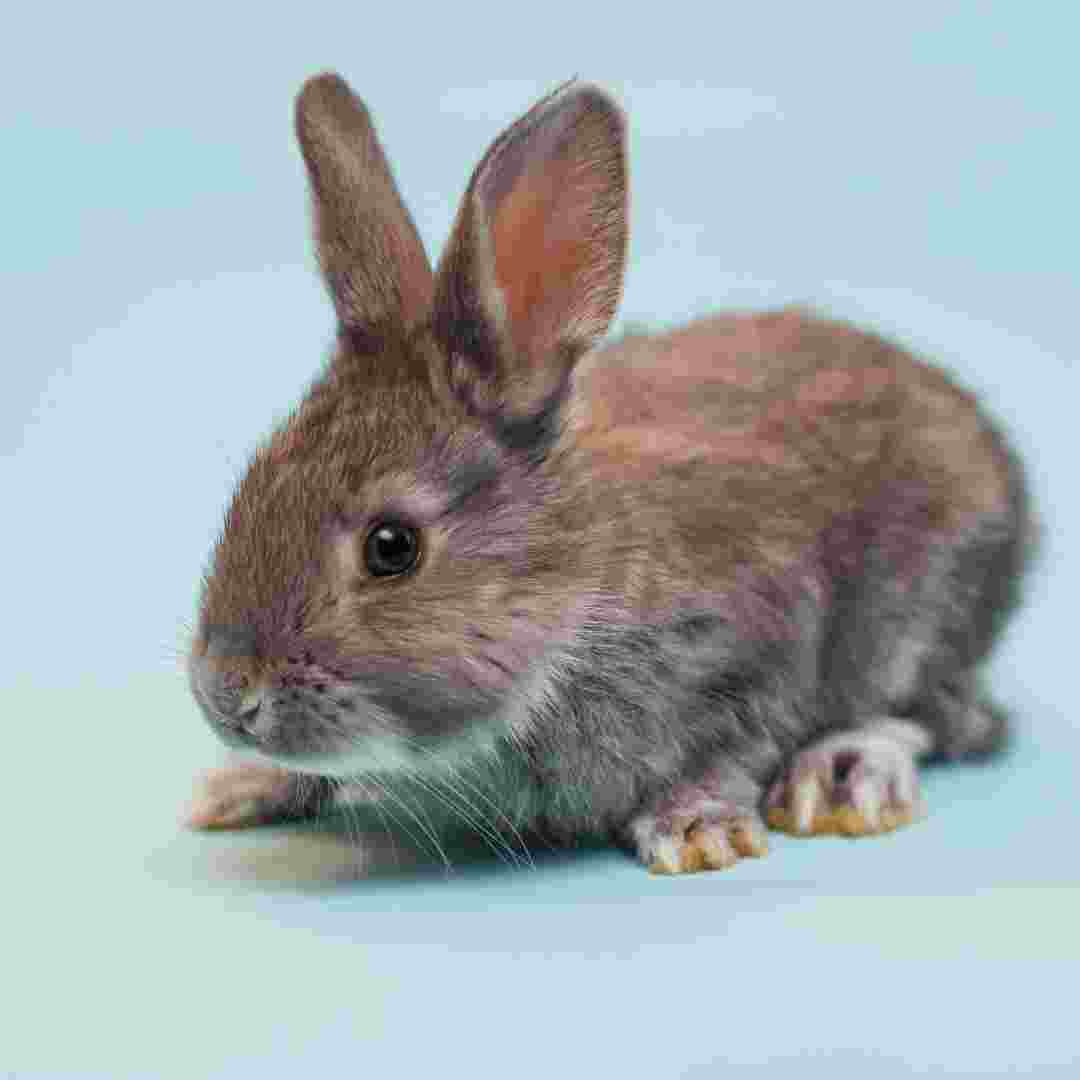Contents Table
Introduction
How to Protect Your Pet from Wet Rabbits
How to Dry a Wet Rabbit: Comfortable Tips
Health Effects of Wet Fur on Rabbits
Wet Rabbit Prevention: Tips for Pet Dryness
Rabbit Bathing Benefits: Clean and Healthy Pets
Q&A
Conclusion
Introduction
Water can be deadly for rabbits. Rabbits aren't used to rainy weather and might get sick or die if neglected. Wet fur can induce hypothermia, skin irritation, and infection in rabbits. Rabbits can also become matted and uncomfortable with wet fur. Keep a rabbit dry and warm, and treat it if it gets wet.
How to Protect Your Pet from Wet Rabbits
Although lovely pets, rabbits might be at risk if not properly cared for. Wet rabbits are susceptible to hypothermia, skin infections, and other health difficulties. Keeping your rabbit dry is crucial to their health and safety.
First and foremost, provide your rabbit a dry, cosy home. Keep their hutch or cage dry and free from dampness. If your rabbit lives outside, cover their hutch from rain and other moisture. If your rabbit lives indoors, keep their cage away from humid areas like bathrooms and laundry rooms.
You should also provide your rabbit dry bedding. Wood shavings, straw, and hay make good bedding, but keep them dry. Wet bedding must be replaced quickly.
Additionally, rabbit fur should be kept dry. If your rabbit gets wet, towel-dry them immediately. Rainy rabbits should be brought inside and dried with a towel. Dry your rabbit well after bathing.
Finally, give your rabbit plenty of fresh water. Always clean and refill their water bowl. Keep your rabbit hydrated to avoid dehydration.
You can keep your rabbit safe and healthy by taking precautions. Wet bunnies can be dangerous, so keep your bunny dry and comfortable.
How to Dry a Wet Rabbit: Comfortable Tips
If your rabbit gets wet, make sure they're comfortable and safe. Tips for drying and comforting a damp rabbit:
1. Remove the rabbit from the water immediately. If the rabbit is outside, bring it inside and keep it warm and dry.
2. Dry rabbit fur gently using a towel. Being too harsh when rubbing the fur might cause skin irritation and pain.
3. Place the rabbit in a warm, dry place with a blanket or towel to snuggle in.
4. If the rabbit is shivering, dry its fur with a low-speed hair dryer. Keep the dryer 12 inches away from the rabbit and never point it towards them.
5. Check rabbit temperature to avoid overheating or cooling.
6. Provide the rabbit with fresh water and food to be hydrated and fed.
Follow these actions to keep your rabbit safe and comfortable after becoming wet.
Health Effects of Wet Fur on Rabbits
Wet fur can harm rabbits. In nature, rabbits' thick fur keeps them warm and dry. However, moist fur might cause health problems.
Skin irritation is the most prevalent wet fur health issue. Wet rabbit fur can irritate and inflame the skin. Itching, redness, and infection can result. In extreme circumstances, damp fur can produce scaly, flaking skin.
Wet fur can cause hypothermia. Wet fur makes rabbits colder since they can't control their body temperature. This can lower energy and increase infection risk.
Wet fur also increases parasite danger. Wet fur attracts fleas and mites, which can harm rabbits. These parasites can cause skin inflammation, anaemia, and death.
Rabbits should stay dry to avoid these health risks. Rabbit fur should be dried immediately if damp. Use a towel or low-speed blow dryer. To avoid wet fur, rabbits should be kept warm and dry.
Rabbit owners may protect their pets by keeping them dry. It's crucial to keep rabbits dry because wet fur can harm them.
Wet Rabbit Prevention: Tips for Pet Dryness
Rabbits are lovely pets but susceptible to moisture. Pets need to stay dry for health and comfort. Keep your rabbit dry with these suggestions.
1. Provide a Dry Shelter: Give your rabbit a dry, safe place. This could be a cage, hutch, or separate room in your home. Ventilate and protect the shelter from rain and other moisture.
2. Use Bedding: Line your rabbit's home with straw or hay. This will absorb shelter moisture.
3. Avoid moisture: Keep your rabbit away from puddles, wet grass, and damp locations. If your rabbit gets wet, towel-dry them quickly.
4. Maintain a comfortable rabbit shelter temperature. High temperatures might cause your rabbit to overheat and sweat, causing dampness.
5. Shade: If your rabbit lives outdoors, provide shade. This will keep them cool and dry in summer.
Follow these steps to keep your rabbit dry and comfy. Remember, dry rabbits are happy!
Rabbit Bathing Benefits: Clean and Healthy Pets
Bunnies are lovely pets that need specific care. Cleanliness and health are crucial to rabbit care. This method requires rabbit bathing, which has many benefits.
A rabbit bath can keep its fur clean and debris-free. Although rabbits are clean, regular washes helps maintain their fur healthy. Keeping long-haired rabbits' fur clean is crucial since their fur can mat and tangle. Bathing reduces shedding, keeping your home clean.
Second, washing rabbits reduces skin issues. Rabbits get mites, fleas, and fungus. Regular baths remove dirt and detritus that harbour parasites and germs, reducing these risks.
Finally, washing a rabbit reduces stress. Rabbits are shy, so bathing can calm them. This can benefit their health by making them more comfortable and relaxed.
Washing a rabbit requires a gentle rabbit shampoo. Rabbit skin is sensitive, therefore human shampoos can irritate and dehydrate it. Hot water can damage rabbit skin, so use lukewarm water.
Bathing a rabbit requires gentleness. Rabbits get stressed easily, so be patient and gentle. Water can irritate and infect rabbit ears and eyes, so keep them dry.
Bathing your rabbit can keep it clean and healthy. Following the above recommendations will guarantee your rabbit has a safe and stress-free bath.

Q&A
1. What happens when rabbits become wet?
Wet rabbit fur can mat and irritate skin. Wet rabbits can also shiver and get sick.
2. Can I keep my bunny dry?
In wet weather, give your rabbit a dry, sheltered place to dwell. Keep your rabbit's cage away from bathrooms and kitchens if they live indoors.
3. What should I do if my bunny gets wet?
Dry your rabbit immediately if it gets wet. After gently patting them dry with a towel, finish with a low-setting hairdryer.
4. Can I bathe my rabbit?
Do not bathe rabbits. If exposed to water for too long, rabbits might become agitated or unwell.
5. What should I do with matted rabbit fur?
If your rabbit's fur mattes, gently comb it with a wide-toothed comb. You may require scissors to gently cut tight mats.
Conclusion
Wet rabbits are uncomfortable and can get sick. Bunnies need a dry, warm, and comfortable habitat. After being wet, rabbits should be dried off and given a warm, dry area to rest. Incorrect rabbit drying can cause skin irritation, hypothermia, and death.
